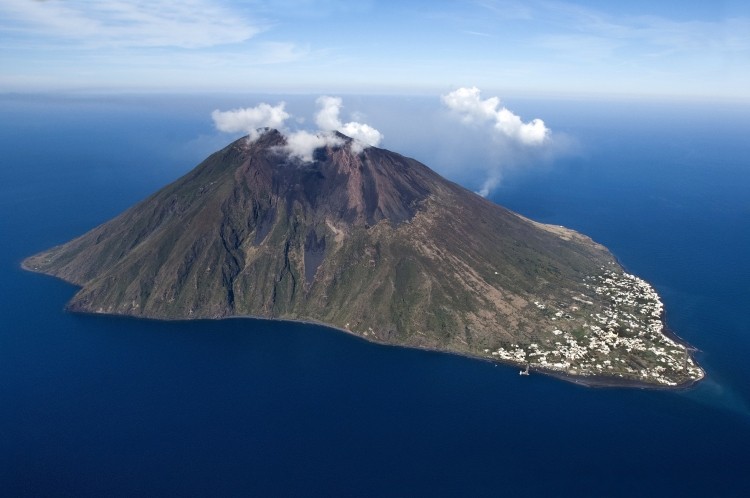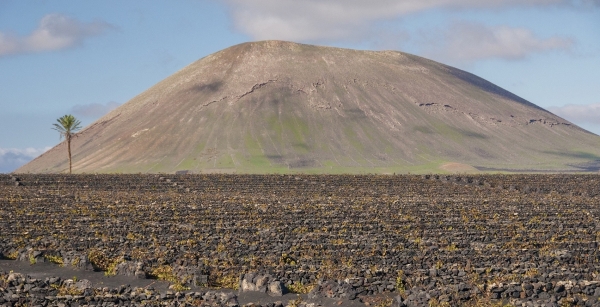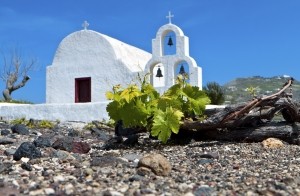ARCHIVE ARTICLE. ‘A unique category produced under some of the most extreme viticultural conditions on the planet’
Establishing a volcanic wine category

Wines from volcanic regions share common characteristics, yet also maintain their own personalities thanks to aspects such as grape varieties, climate and wine-making traditions – creating a ‘fascinating world to discover’, according to Master Sommelier John Szabo.
The inaugural International Volcanic Wines Conference will be held in New York City next year (March 27), aiming to establish a volcanic wine movement and to provide educational and promotional opportunities for volcanic wine producers internationally.
What is a volcanic wine?
While volcanoes are impressive phenomena in their own right, they also give rise to other natural wonders – hot springs, highly flavored vegetables, coffee shrubs and, of course, wine grapes.
Toronto-based author and wine critic, John Szabo, has been one of the strongest advocates for volcanic wines. As the first Canadian to add the Master Sommelier credential to his name, and named as Canada’s best known sommelier in Meininger’s Wine Business International, he published a book last year that explores the market and potential for volcanic wines (‘Volcanic Wines, Salt, Grit and Power’).
One of the challenges for the volcanic wine movement is that there is no definition – the concept of a volcanic wine being ‘fluid like molten lava’, according to Szabo.
“From my perspective, volcanic wines are those made from grapes grown on volcanic soils. And what’s a volcanic soil? That’s also a fluid discussion.”
Szabo uses a broad definition based on soil formed from parent volcanic material.
“For the most part that means soil formed from extrusive igneous rocks – lava in all of its colorful variations – plus all of the rest of the fragmented materials that regularly get ejected from volcanoes, collectively called tephra.
“I include soils heavily laced with volcanic ash, even if they’re not on a volcano, and also, where appropriate, vines grown on volcanic alluvium and colluvium, volcanic rocks that washed or tumbled down hills into valleys.”
And of course not all volcanic soils are identical, with variations in age, difference in chemical and physical structures, regional weather, and the possibility of human interference on the soil.
‘Minerality and volcanic wines walk hand-in-hand’
However, despite the lack of a singular ‘volcanic wine’, there are features that are common among wines to create a category – even if only anecdotally rather than scientifically defined.
“These features loosely sketch the picture that is then completed by the infinite subtleties of every region and every wine and every vintage,” said Szabo.
Most important is the mineral content of the soil that leads to the distinct taste and defining factors of volcanic wines: as Szabo puts it: ‘Minerality and volcanic wines walk hand-in-hand”.
So what are these common characteristics?
Pacific Ring of Fire
Three-quarters of the world’s active and dormant volcanoes are located along the Ring of Fire: a belt that stretches around 40,000km from southern Chile around to New Zealand.
Also located on this belt are world-renowned wine producing regions such as New Zealand, California and Chile.
“Number one is that wines from volcanic soils hinge on a common mouth-watering quality, sometimes from high acids, almost always from palpable saltiness, sometimes both,” says Szabo.
“Mineral salts involving elements present in wine – like potassium, magnesium and calcium, along with their acid-derived molecular partners like chloride, sulphate and carbonate – have been implicated (although in seaside vineyards it’s often plain old sodium chloride from sea spray, not soils).
"Mineral salts may also explain the vague but pleasantly bitter taste found in some wines.
“Number two is their savory character. Volcanic wines have fruit, of course, but it’s often accompanied, if not dominated by non-fruity flavors in the earthy and herbal spectrums of flavor, along with all of the nuances covered under the magnificently useful, multi-dimensional term minerality and all of its varied definitions.”
The mineral content leads to a whole range of styles and flavors – thus creating the complex task in creating a definition.
“There is no volcanic wine in the singular, but a great and varied many,” says Szabo. “Terroir is a complex system of which soils (and their parent geologies) are an important part, but of course not the only part.
"Comparable characteristics exist, but volcanic wine regions around the world have even more unique features.”
Sicily, Santorini, New Zealand...
Wine regions that can be considered ‘volcanic’ have developed where such soil conditions collide with commercially relevant production and high quality.
New Zealand’s North Island, the Napa Valley, Sonoma County, France’s Auvergne region and Sicily are all regions that have – either in full or in part – volcanic wines.
Meanwhile, other areas such as the Azores, Canary Islands, Madeira, Santorini, and Somló, Balafon and Tokaj in Hungary can all be considered as exclusively volcanic regions.
However, along with the blessing of mineral rich soil comes the curse of what Szabo describes as ‘the most extreme viticultural conditions on the planet’ – challenges that include steep slopes, poor or low yielding soil – and, indeed, “the occasional volcanic eruption that can obliterate a generation’s work in a scoring flash.”
Santorini
The island of Santorini has a special ecosystem, created by explosions of the local volcano and lava. In this volcanic ecosystem, products with unique characteristics are produced: Assyrtiko grapes, Santorini Fava Beans and Santorini Τomatoes.
Wine making in Santorini dates back to the 3rd millennium BC. Assyrtiko is the most popular white grape variety, which thrives in its homeland, the volcanic land of Santorini.
There are three Protected Designation of Origin Santorini wines: Santorini Assyrtiko, Santorini Nykteri and Vinsanto the traditional dessert wine made from sun-dried grapes.
Santorini wines combine the high acidity with the intense minerality in the mouth. They are vibrant, full-bodied, with citrus fruits aromas. After ageing, they get more complex as the notes of oak, tea and honey are dominant.
Source: Santo Wines (Union of Santorini cooperatives)
‘People are already fascinated by volcanoes’
Szabo wants to see volcanic wines develop as a united industry and become an established movement: recognized for their premium, unique characteristics.
This is where the International Volcanic Wine Conference in March will come in: providing the communication tools to everyone involved in wine: from the winegrowers through to buyers and trade and the media.
Producers from regions as diverse as Basilicata, Sicily, Soave, Campania, Santorini, Tokaj, Badacsony, Somló, Washington State and more will be participating in the inaugural conference.
'People are fascinated by volcanoes and open to stories about them and food and wines that grow on them' - Szabo
The conference will provide educational and promotion opportunities for volcanic wine producers internationally, acting as a catalyst and facilitator to bring volcanic wine producers together into a ‘volcanic wine brand’ – hence defining a new unique category.
It is certainly a challenge to establish a new category and educate a wine industry already bursting with various regions, varieties, choice and producers. But Szabo that the centuries-long awe people hold volcanoes in will give the category a head-start.
“The good news is that most people are already fascinated by volcanoes, and open to stories about them and the unique products - both foods and wines - that grow on them,” he said.
Pictures: Getty (from top to bottom): Andrius Kaziliunas; Meinzahn; Panos Karapanagiotis








